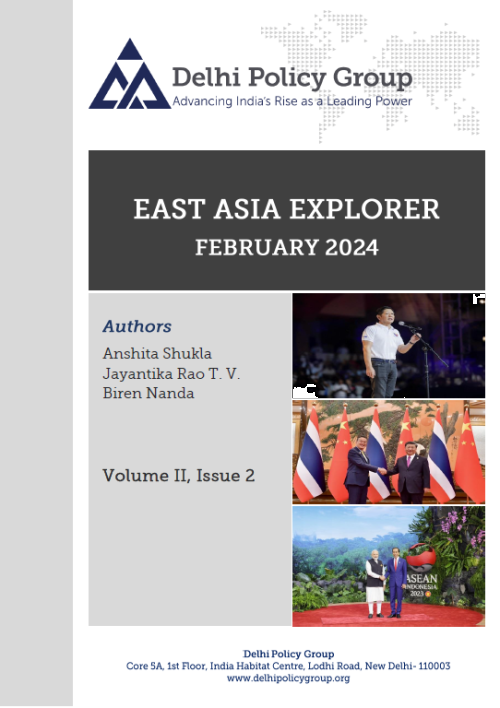East Asia Explorer
Date: March 06, 2024
The East Asia Explorer tracks evolving geopolitical trends, emerging security challenges, and progress towards regional integration in East Asia. It focuses on the ASEAN grouping, domestic and foreign policy developments in countries of East Asia and Oceania, great power contestation in the region, and India’s relations with ASEAN and its member countries.
In this issue, Anshita Shukla analyses the ongoing feud in the Philippines between former President Rodrigo Duterte and serving President Bongbong Marcos. She assesses the various facets of the public rift: accusations of drug abuse, demands of secession, rewriting of the constitution, and an investigation on the use of confidential funds. The implications of these tensions between the two political dynasties on the escalating great power rivalry in the region are outlined.
Jayantika Rao examines Thailand’s current stance towards the United States and China. She highlights the historical context of Sino-Thai and US-Thai relations, providing insight into the factors that have shaped Thailand’s current perspective in the face of the growing US-China rivalry. She then sheds light on the complexities of Thailand’s position and its challenges in navigating the shifting dynamics of regional and global power.
Finally, Ambassador Biren Nanda examines how India’s ‘Act East Policy’ contributes to the larger national security concerns and policies of India. He answers some pertinent questions in his piece: What is the significance of India’s geographical location to her national security? How are India’s economic goals shaping her foreign and security policy? What are the priorities and strategic objectives of the Modi government’s foreign policy? What are the key challenges that confront India’s national security policies?
To read this East Asia Explorer, Vol. II, Issue 2, please see the PDF attached. H.K. Singh
In this issue, Anshita Shukla analyses the ongoing feud in the Philippines between former President Rodrigo Duterte and serving President Bongbong Marcos. She assesses the various facets of the public rift: accusations of drug abuse, demands of secession, rewriting of the constitution, and an investigation on the use of confidential funds. The implications of these tensions between the two political dynasties on the escalating great power rivalry in the region are outlined.
Jayantika Rao examines Thailand’s current stance towards the United States and China. She highlights the historical context of Sino-Thai and US-Thai relations, providing insight into the factors that have shaped Thailand’s current perspective in the face of the growing US-China rivalry. She then sheds light on the complexities of Thailand’s position and its challenges in navigating the shifting dynamics of regional and global power.
Finally, Ambassador Biren Nanda examines how India’s ‘Act East Policy’ contributes to the larger national security concerns and policies of India. He answers some pertinent questions in his piece: What is the significance of India’s geographical location to her national security? How are India’s economic goals shaping her foreign and security policy? What are the priorities and strategic objectives of the Modi government’s foreign policy? What are the key challenges that confront India’s national security policies?
To read this East Asia Explorer, Vol. II, Issue 2, please see the PDF attached. H.K. Singh



